Going to the beach is enjoyable and fun – and probably a huge part of why you want to go to Okinawa in the first place. While you shouldn’t be scared to go to the beach in Okinawa, it is necessary to be aware of some dangers associated with the beach and sea, hence this guide on beach safety. In the tropical waters surrounding all Okinawa islands are a range of dangerous animals which you need to be aware of and respect. In the sections below are some reminders of what to be aware of when enjoying the pristine beaches of Okinawa. As for sharks – they do live in the waters around Okinawa. Just respect the signs, and you’ll be just fine.
| Sea Emergency Number call 118. |
Important Beach Safety Equipment
The list below is a small reminder of things you should remember to bring when you go to the beach. Some are only important if you are going in the water – but sunscreen, water and protection from the sun is always a must.
- Sunscreen
- Water
- Long sleeve t-shirt
- Sunglasses
- Sunhat
- Wetsuit
- Jellyfish emergency kit (vinegar)
Heatstroke and sunburn
Let’s start with the obvious – the risk of getting a heatstroke or a sunburn is quite high with all the sun Okinawa gets. Therefore, be sure to always follow the beach safety advices on the list below:
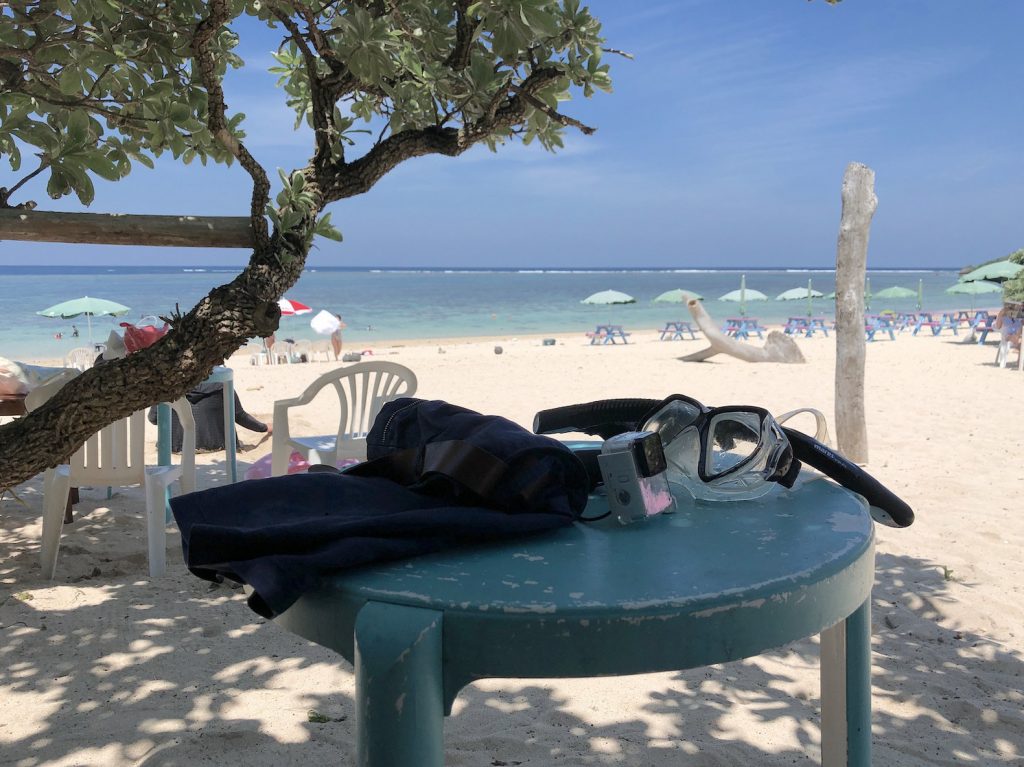
Being safe under the sun
- Use Sunscreen
- Drink plenty of water
- Seek the shade
- Wear a hat
- Wear long sleeves (also while swimming)
- Eat salty foods
Cuts and scratches
There are many beaches in Okinawa which have coral reefs near the coast. While corals are really beautiful, it is very important not to injure the them, which is why you should never step on, or touch corals. Additionally many of them can be sharp as knives and you can easily get cuts and scratches if you swim too close. You should pay special attention around low tide and when swimming on shallow waters.
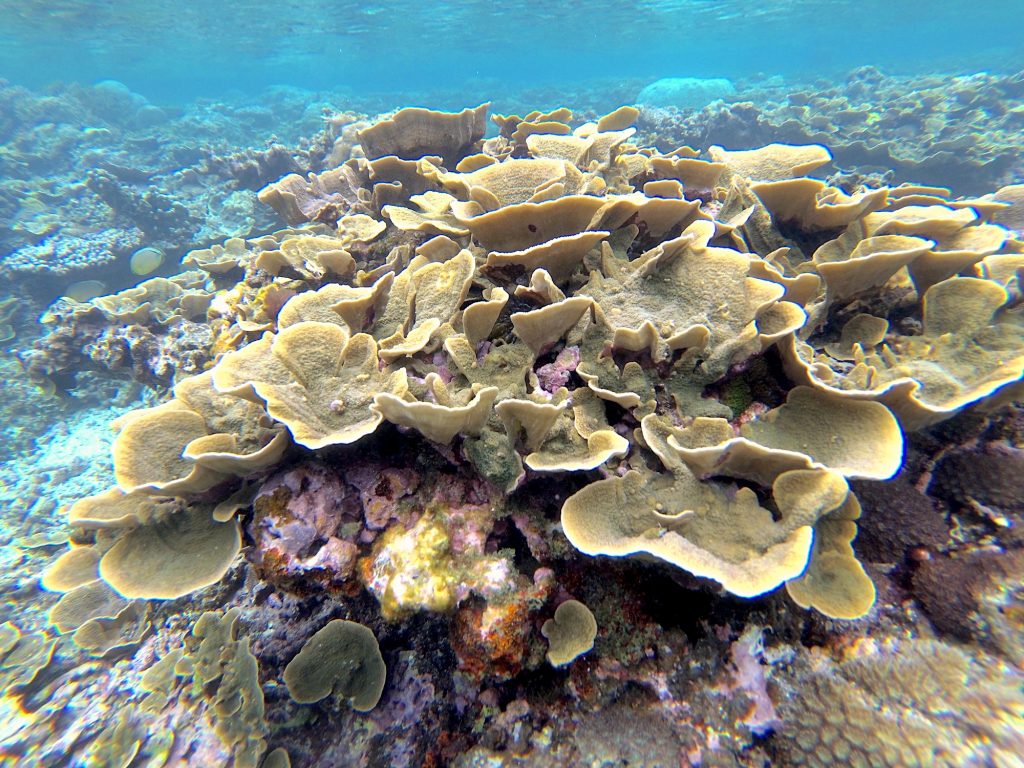
Tips for avoiding scratches
- Wear beach shoes when in the water
- Wear a thick wet suit when snorkeling
- Wear diving gloves
- Don’t touch any animals or plants
- Observe animals from a distance. Some fish bite.
Dangerous Sea Animals
The seas around Japan have a number of poisonous and dangerous creatures, which you want to avoid while enjoying the pristine waters of the Okinawan islands. While incidents are rare, it is mostly so because people swim and behave thoughtfully in the sea. Make sure to wear swimming shoes – and don’t touch any animals or plants. Some managed beaches also put up nets to prevent jellyfish from getting into the swimming area.
There are many more dangerous animals in the sea than shown below. The below list is a selection of those most commonly warned about. The list of dangerous sea creatures is borrowed from visitokinawa.jp where you can find more information. The photos are kindly provided by Okinawa Prefectural Government Institute of Health and Environment.
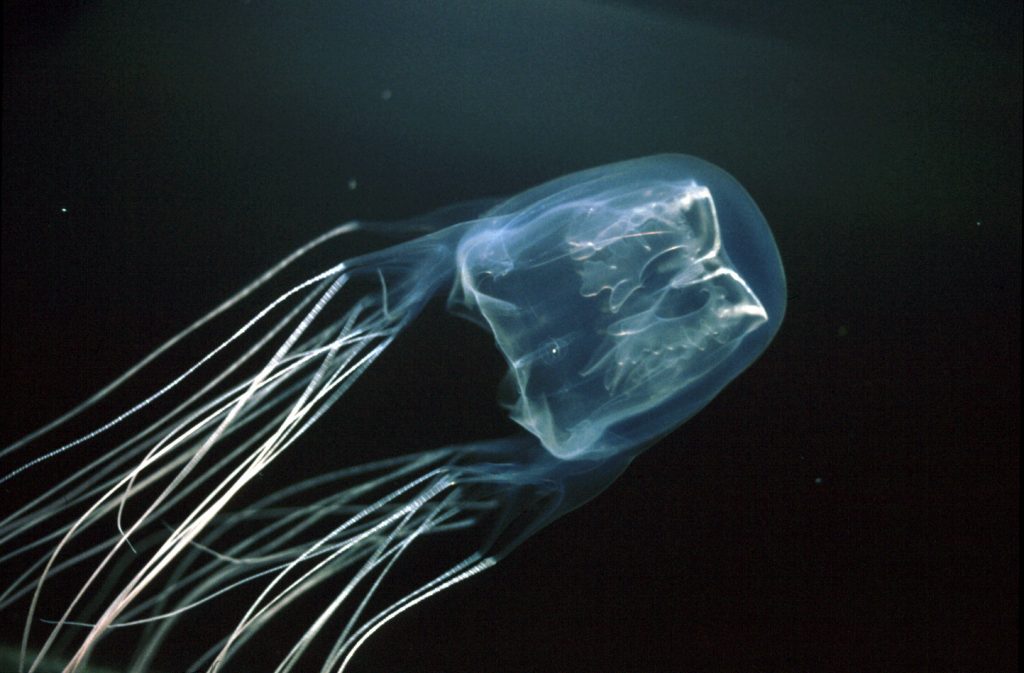
Box Jellyfish
The Box Jellyfish is active during the summer period, from May to October. It is found in all waters around the Okinawa islands – also near beaches and on shallow waters.
Emergency treatment: Do not rub! pour vinegar over the tentacles which are still on your body. If some tentacles are not hooked into you, then remove them with utmost care. Cool down the affected area and seek medical treatment immediately.
Photo: Okinawa Prefectural Government Institute of Health and Environment
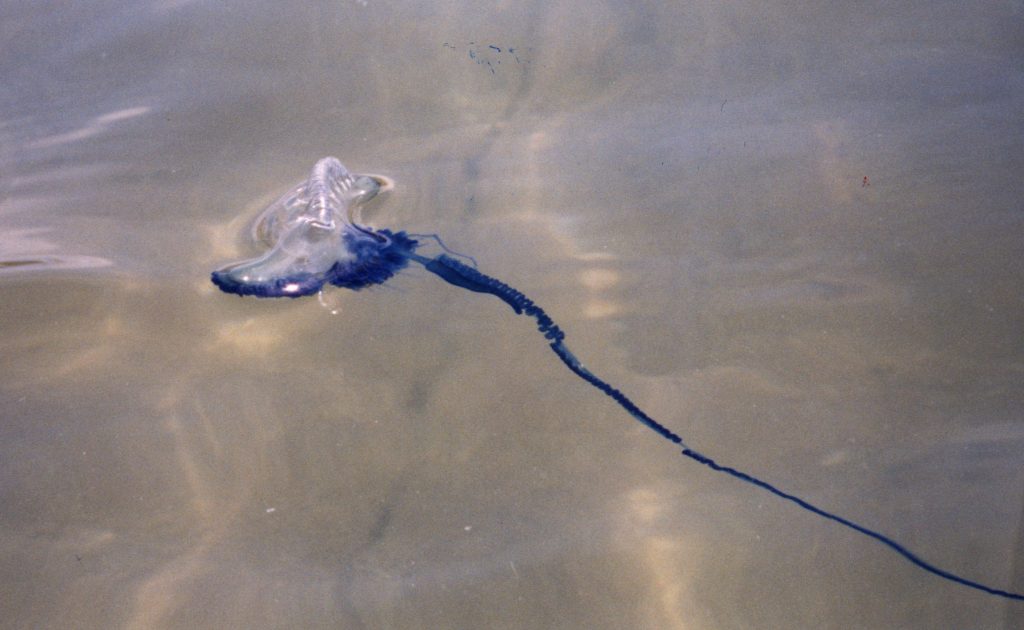
Portuguese Man-of-War
The so-called “Portuguese Man-of-War” is a poisonous jelly fish, commonly found on the open sea. It can however appear along the shores. It has a blue-ish colored body, and long dark-blue tentacles .
Emergency treatment: Don’t rub! never rinse with vinegar! Instead, rinse with sea water, and remove remaining tentacles with utmost care. Cool down the affected area and seek medical treatment immediately.
Photo: Okinawa Prefectural Government Institute of Health and Environment
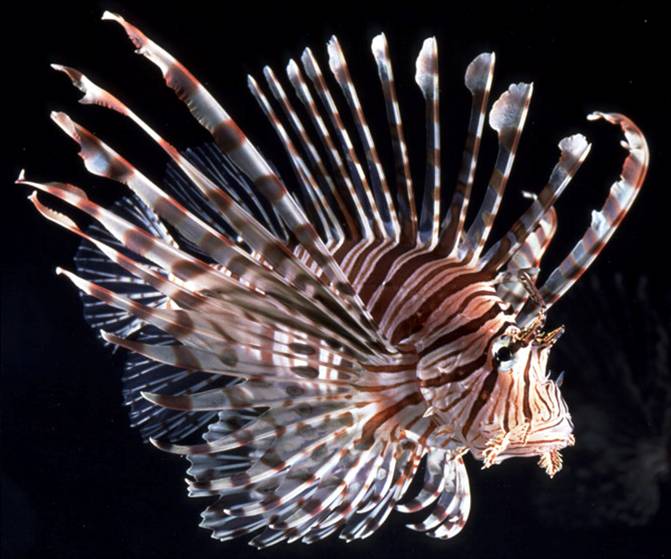
Lionfish
This very beautiful fish is known by most divers and snorkelers. The spiky fins contain venom, and are raised when the animal feels threatened. Never provoke, chase or bother a Lionfish. Simply observe from a distance and move away immediately.
Emergency treatment: remove spikes, disinfect the wounds and soak the affected area in non-scolding hot water (40-45°C / 100-115°F). Seek medical treatment immediately afterwards.
Photo: Okinawa Prefectural Government Institute of Health and Environment
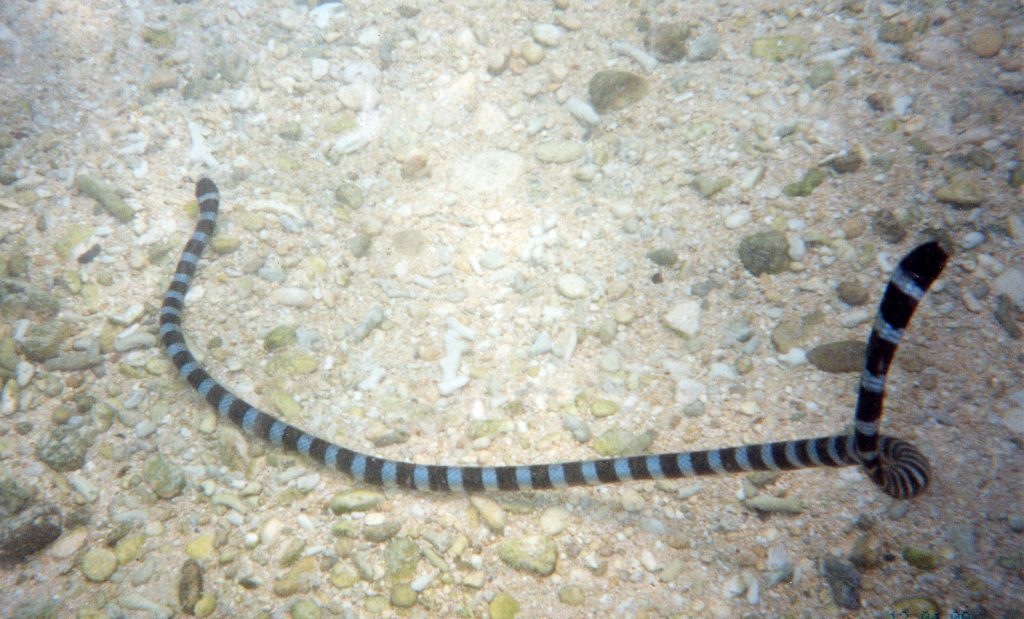
Sea Snakes
There are several types of sea snakes in Okinawa. Some have strong nerve poison which can result in paralysis in humans.
Emergency treatment: If bitten, get out of the water, squeeze out venom and seek medical treatment immediately. Avoid unnecessary movement as not to speed up the circulation of the venom in the body. Get someone to drive you to the emergency room instantly.
Photo: Okinawa Prefectural Government Institute of Health and Environment
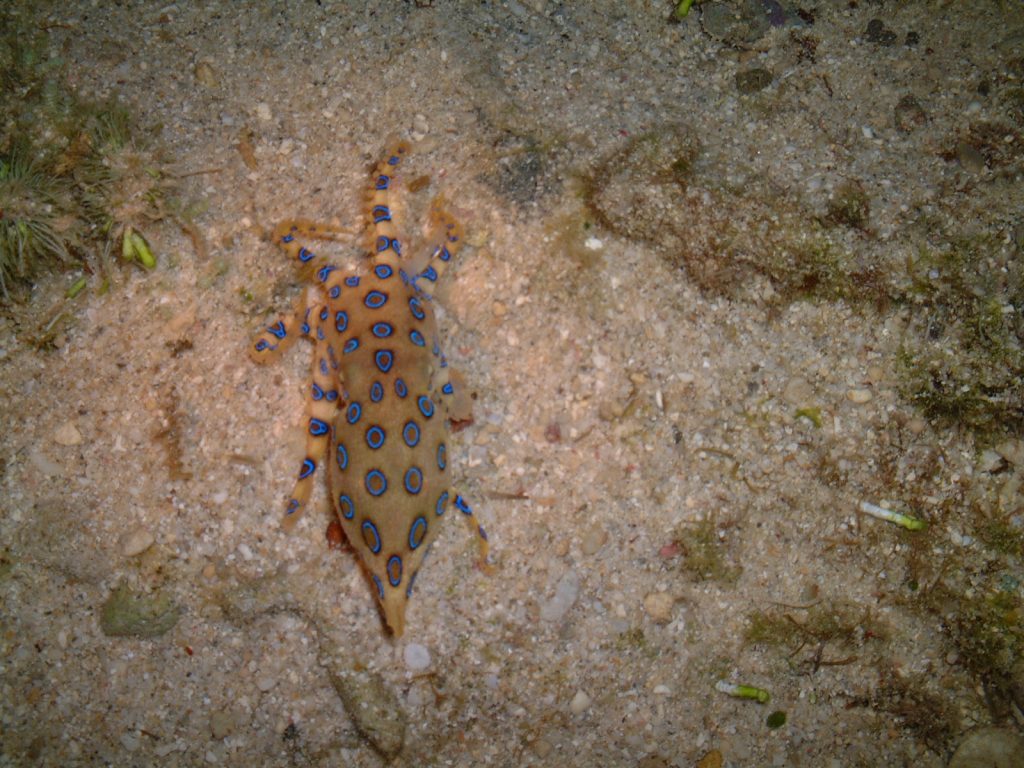
Blue-ringed Octopus
This beautiful octopus can be quite dangerous. A bite can inject poison into the body. This octopus can be recognized by the blue rings which forms on its skin when surprised or provoked.
Emergency treatment: squeeze out the venom (do not suck it out) and seek medical treatment immediately. Avoid unnecessary movement as not to speed up the circulation of the venom in the body. Get someone to drive you to the emergency room instantly.
Photo: Okinawa Prefectural Government Institute of Health and Environment
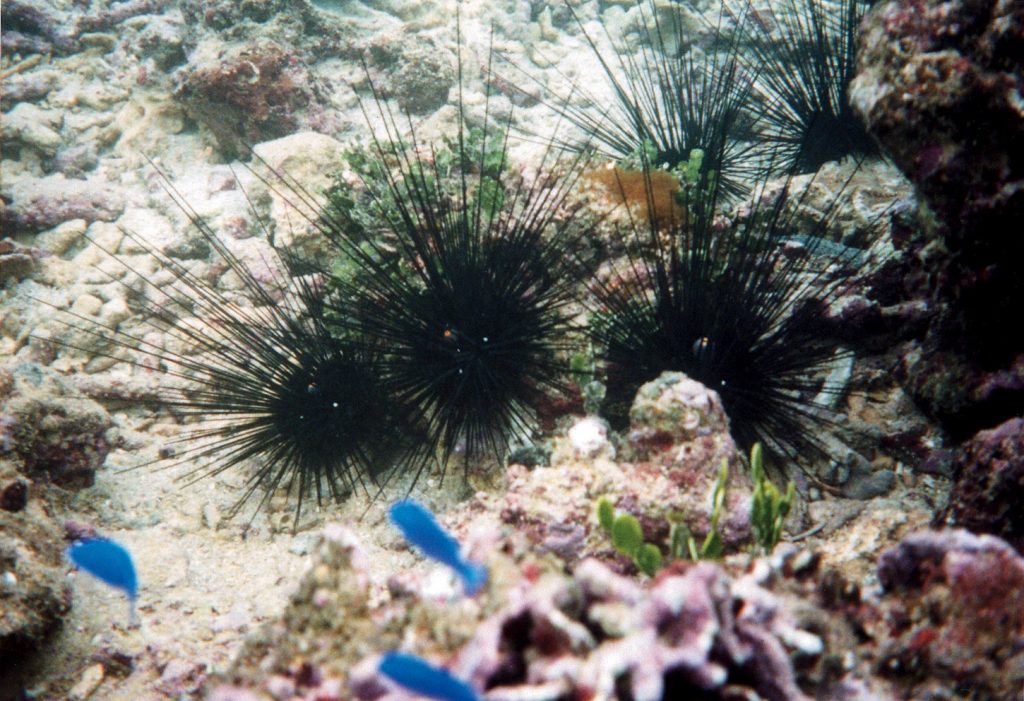
Black Long Spine Urchin
The urchin is easily recognizable by it’s long, black spikes which have poison embedded in the tips. They can often be found on relatively shallow waters – also in areas where you swim. Be careful not to step on them. Wearing thick swimming shoes can help prevent penetration.
Emergency treatment: remove spikes and soak in non-scolding hot water (40-45°C / 100-115°F). Seek medical treatment afterwards.
Photo: Okinawa Prefectural Government Institute of Health and Environment
There are many things to keep in mind while going to the beach in Okinawa. However, it should not destroy your experience or keep you away from the beach. Thousands of people visit the beaches of Okinawa every day, without getting injured. The risk of an injury will be smaller if you keep the above beach safety tips in mind. Enjoy the beach!
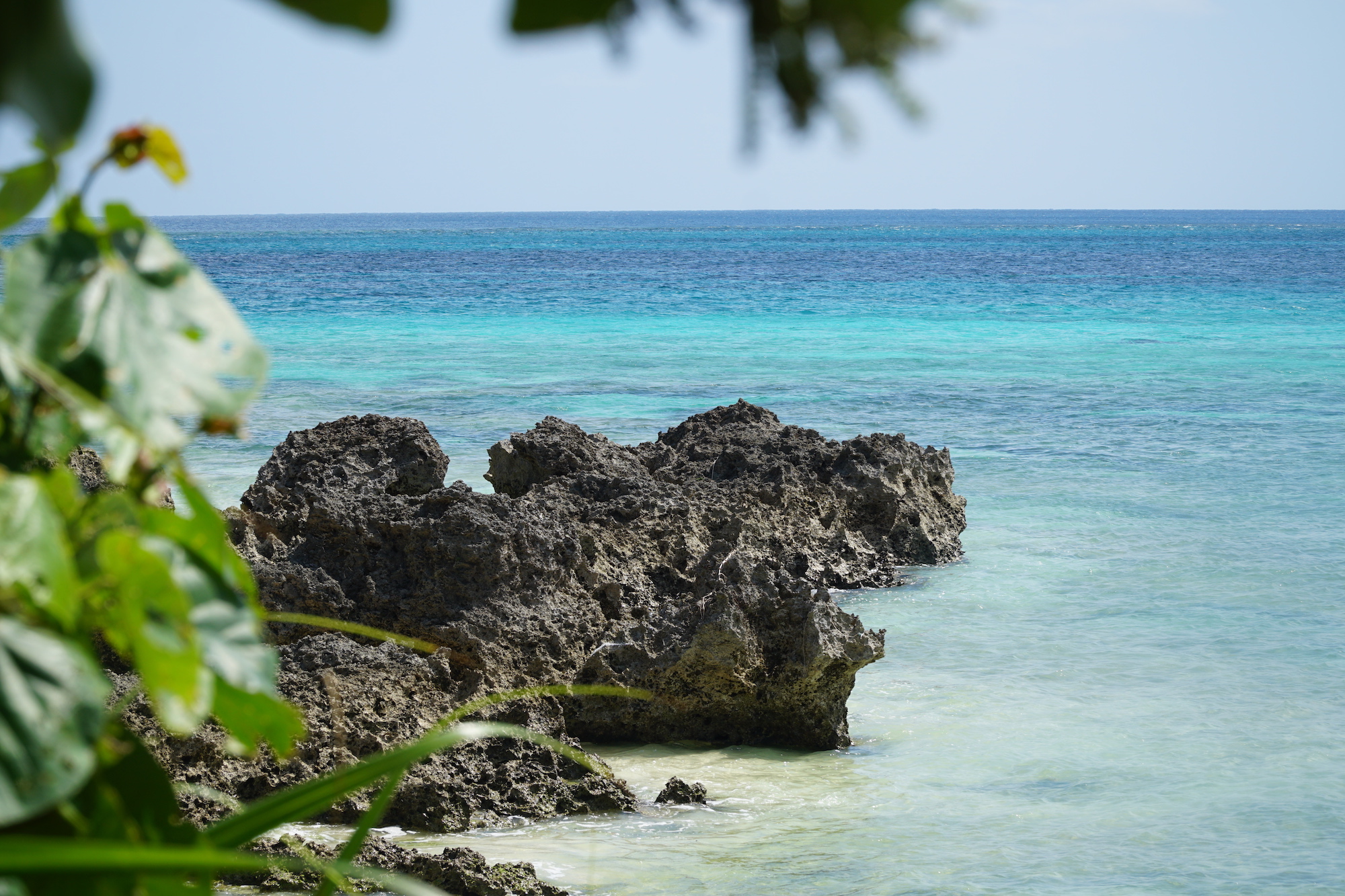
Suggested Hotels in Naha, Okinawa

| Okinawa Hinode Resort and Hot Spring Hotel |
| ☆☆☆☆ |
| Find Prices |

| Hotel JAL City Naha |
| ☆☆☆☆ |
| Find Prices |

| Hotel Strata Naha |
| ☆☆☆ |
| Find Prices |

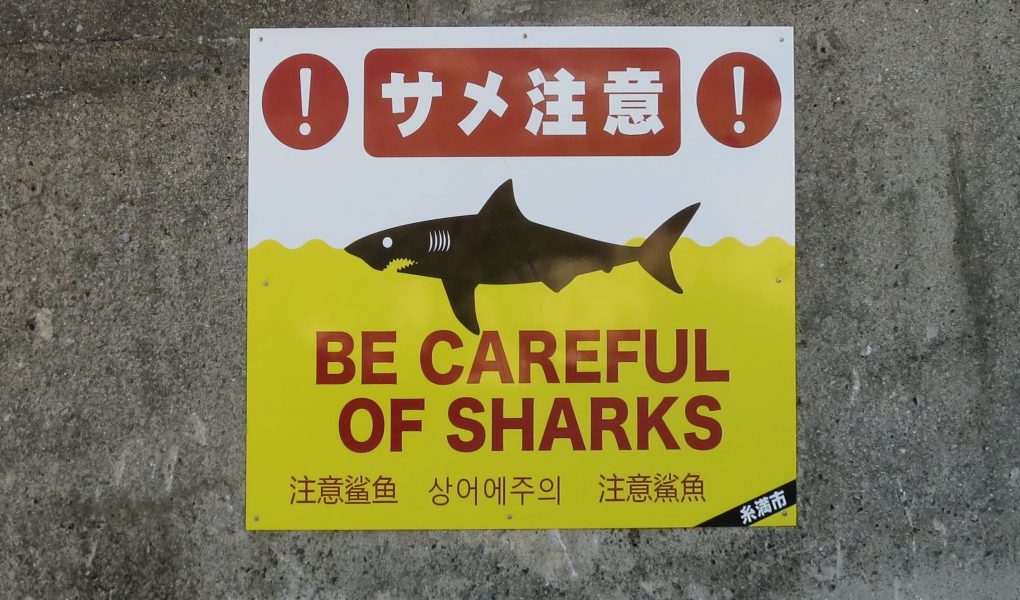





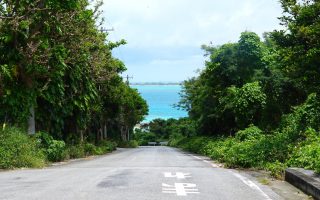
I’ve been there 1983, lookin forward to visit again.
Ty
My family and I live there from Feb 2013 to July 2019, & frequented the beaches snorkeling and kayaking. We have encountered all of the above mentioned sea creatures, plus many more. Never had any issues, but we were aware of & kept our distance from the venomous guys. There are many more common creatures to be cautious of than mentioned in this article, such as the rock or devil fish that we have come across. So do some further research & be cautious. There are sharks, as well.
If you intend on going snorkeling, bring a ziplock bag of pho. Toss a couple of pieces into the water & you will be surrounded by many varieties of fish. It is an awesome experience.
~ Please don’t litter, leave it nicer than you found it.